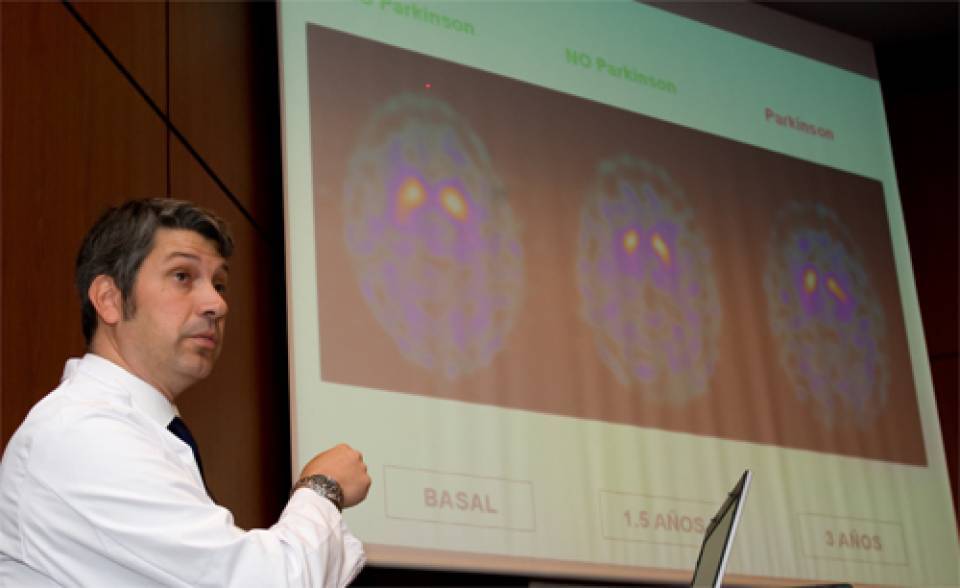The new study applied brain SPECT to conclude that the levels of dopamine in the brain are quickly lowering over the years in patients with REM sleep behaviour disorder. This neuroimaging technique becomes the first tool to detect the disease progression at an early stage. The first author of the three articles is Dr. Àlex Iranzo, doctor from the Neurology Service at the Hospital Clínic of Barcelona, researcher at the Biomedical Research Institute of August Pi i Sunyer (IDIBAPS) and member of the Multidisciplinary Sleep Disorders Unit , and the senior authors were to Dr. Joan Santamaria and Dr. Eduard Tolosa, from the same institution.
The study involved comparing for three years the evolution of brain SPECT in 20 patients with REM disorder and 20 healthy controls. The neuroimaging technique measures the presence of dopamine in the substantia nigra, a part of the brain associated with learning and harmony of body movements. In Parkinson's disease a deficiency of dopamine in the substantia nigra causes tremor, stiffness and movement slowness in patients. Results show that after 3 years of monitoring the production of dopamine in the control group was reduced by 8% due to age, while the group of REM sleep disorder patients experienced a reduction of 20%. Once the 3 year follow-up ended, 3 of 20 patients in the REM sleep disorder group had developed Parkinson's disease and their dopamine reduction was around 30%.
The three works led by the IDIBAPS - Hospital Clínic of Barcelona team conclude that more efforts are needed to create neuroprotective drugs that prevent the progression from REM sleep behavior disorders to Parkinson's disease. For the first time scientists have a technique, brain SPECT, to evaluate whether these drugs are effective. Authors of the study suggest that, to be considered effective, a neuroprotective drug should significantly prevent the dopamine concentration from dropping in these patients.

